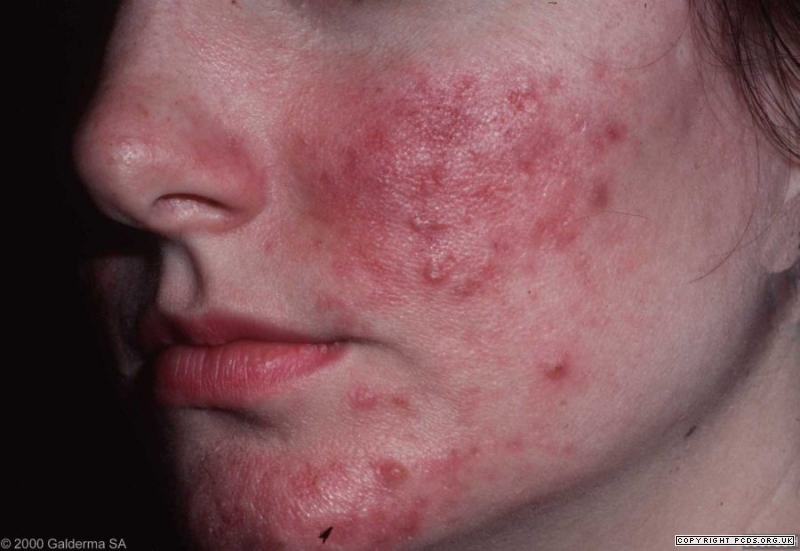Understanding Rosacea and Acne
For one it seems easy to differentiate rosacea and acne, however, it is not as simple as you might think. As a matter of fact, for several years, it was long thought the two skin problem were one in the same. It is correct that both skin problems share numerous features. However, gradually, the distinctions between the problems have been point out and are now much better recognized. Below are some truths regarding the skin disorders, that will help individuals know more about acne and rosacea.
Most of the times, rosacea is a severe skin disease identified by facial swelling or edema, the existence of pus-filled acne or pimples, inflammation, and dilated blood vessels on the face. Although this disease can affect both genders of any ages, it is more popular among middle-aged adults between 30 and 50 years old. It is also three times more frequent in females than males and among people with light or fair skins (Caucasians). Sometimes, the facial skin gets reddened, rough, and/or oily. In severe cases of rosacea, the nose can seem scaly, red, as well as round or distorted.

Difference between rosacea and acne
In order to identify between rosacea and acne, it is necessary that typical symptoms and signs of the two skin problem are understood. For instance, oily skin is more common among acne patients than those affected by rosacea. The presence of comedones (blackheads) develop only among acne patients while rosacea consists of consistent inflammation and flushing of the skin. This inflammation and flushing of the skin is only identified among rosacea patients.
In addition, body sores might also exist on other areas of the body such as shoulder, back, scalp and chest in the event of acne. Whereas rosacea is confined to the nose, chin, forehead and cheeks. Moreover, acne also often show up on its own in earlier life, typically at the time of the onset of adolescence or puberty, while rosacea usually shows up itself throughout adulthood.
4 Sub types of rosacea
One more crucial difference to recognize is that rosacea has 4 subtypes. Three types impact the skin whereas the 4th affects the eyes, that is referred to as ocular rosacea.
Sub type 1
The first sub-type is identified by flushing, facial inflammation, and visible blood vessels. Other symptoms and signs of subtype 1 include inflammation and flushing in the center of the face, damaged blood vessels or spider veins, a range of skin disorders, along with a possibility to flush or blush more easily than other individuals.
Sub type 2
The second subtype is identified by regular acne-like outbreaks. Additional symptoms and signs of subtype 2 rosacea consist of a number of skin conditions, raised skin patches, that are known as plaques or plaks, and spider veins. This subtype was formerly referred to as acne rosacea prior to the distinction between acne and rosacea was much better understood.
Sub type 3
The third subtype is identified by a thickening skin. This subtype of the skin problem is very rare. Other subtype 3 symptoms and signs consist of oily skin, spider veins, skin texture distortion, bigger pores, and thickening skin on the chin, forehead, nose, ears, and cheeks. The thickening skin typical to this subtype of the problem is mainly prevalent around the nose. When the skin thickens on the nose, it is referred to as rhinophyma. An individual who struggles with this particular subtype generally has signs or symptoms of another subtype of rosacea too.
Sub type 4
The fourth subtype of this particular skin problem is
described as ocular rosacea. It is identified by photo-sensitivity, bloodshot or
watery eyes, quite dry or itchy eyes, fuzzy vision, cysts or spider veins on
eyelids, reduced vision, and burning sensation in the eyes. If someone develops
such major subtype of rosacea, it is recommended to seek urgent medical
attention.
It is also typical for individuals to suffering from more than one rosacea subtype simultaneously. In addition, individuals usually encounter other skin problems along with their rosacea. It is also essential to note that if this problem is left untreated, it can get worse over time and with age.
Treatment options
In regards to treatment choices, lots of acne patients react well to OTC or prescription creams although several topical steroid creams can aggravate rosacea. On the contrary, oral medications and life-style improvements have shown very effective in reducing symptoms and boosting the skin look of rosacea victims. Similar treatment methods are also very successful with many acne sufferers.
In regards to alternative treatment or homeopathic approaches, given the sensitive skin commonly attributed to rosacea and acne patients, any home treatments or natural remedies must be applied with extreme care. Similar to any acne or rosacea therapy, several individuals could suffer from reactivity or irritation with treatment. Some natural treatments for managing acne or rosacea can consist of dilute vinegar solution, tea tree oil, and green tea applications.
Understanding rosacea and acne is not as well-defined as one may think. While it is true that both skin conditions share several attributes, the distinctions between the two skin problem have been highlighted and are now much better understood. Because more details are learnt about the skin problems, it can easily help individuals understand more concerning acne, rosacea, and their big differences.
Home › Types of Acne › Rosacea and AcneTags
blackheads, comedones, OTC, prescription, homeopathic
approaches
Irresistible Acne Remedies. This free newsletter is delivered monthly, straight to your INBOX. It covers all new pages since the last issue. Sign up here...


New! Comments
Have your say about what you just read! Leave me a comment in the box below.